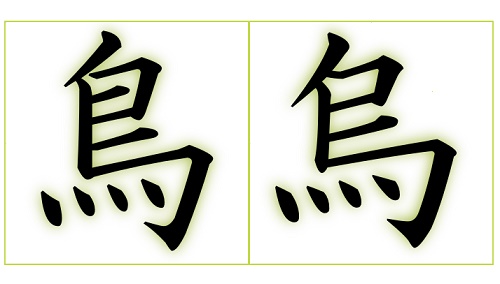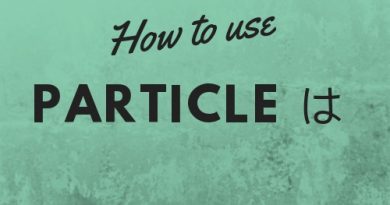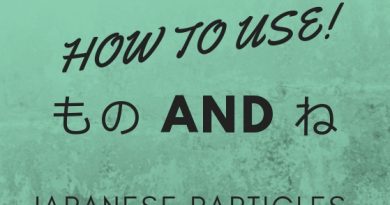The Kanji pairs are easy to mistake

Hello everyone! When learning Japanese, you have to study Kanji (from easy kanji to difficult kanji). For many people, Kanji is hard and many kanji look similar to each other. In this post, Learn Japanese Daily will introduce to you the lesson: The Kanji pairs are easy to mistake.
Contents
The Kanji pairs are easy to mistake
士 and 土
The first one is 士 (gentleman, samurai. For example, 弁護士 (bengoshi) – lawyer). The second one is 土 (soil, earth. For example, 土地 (tochi) – plot of land, soil). These two characters are quite similar to each other. They differ in that: The character 士 has the first stroke (the upper horizontal stroke) longer than the third stroke (the lower horizontal stroke), whereas, the character 土 has the first stroke (the upper horizontal stroke) shorter than the third stroke (the lower horizontal stroke).
千 and 天
The first one is 千 (thousand. For example, 1 千円: 1,000 yen). The second one is 天 (heavens, sky. For example, 天の河: Milky Way). These two characters are quite similar to each other. They differ in that: The character 天 has two lower strokes, and the character 千 has the upper stroke deflected to the right.
未 and 末
The first one is 未 (un-, not yet, still. For example, 未知: not yet known, unknown). The second one is 末 (end, close. For example, 年末: end of year). They differ in that: The character 未 has the upper horizontal stroke shorter than the lower horizontal stroke, while the character 末 has the upper horizontal stroke longer than the lower horizontal stroke.
毛 and 手
The first one is 毛 (fur, hair. For example, 髪の毛 : hair). The second one is 手 (hand. For example, 手足: hands and feet). They differ in that: The character 毛 has three strokes deflected to the right. Only the first upper horizontal stroke of the character 手 is deflected to the right.
人 and 入
The first one is 人 (person. For example, 人間: human being, person). The second one is 入 (enter, insert. For example, 入学: entry to school or university). They differ in that: The character 入 has the right stroke deflected to the left, the left stroke is written based on the right one. The character 人 is created by writing the left stroke first and then the right stroke.
力 and 刀
The first one is 力 (power, strength. For example, 力士: sumo wrestler). The second one is 刀 (sword, knife. For example, 刀のつか: sword guard). They differ in that: The character 力 has the left curved stroke rising above the other stroke, while the character 刀 doesn’t have.
右 and 石
The first one is 右 (right. For example, 右側: right side). The second one is 石 (stone). They differ in that: The character 右 has the left curved stroke rising above the horizontal stroke, while the character 石 doesn’t have.
牛 and 午
The first one is 牛 (cow. For example, 牛角: horns). The second one is 午 (noon. For example, 午前: morning, a.m.). They differ in that: The character 牛 has the vertical stroke rising above the upper horizontal stroke, while the character 午 doesn’t have. Please pay attention to these two characters because they often appear in N5 and N4 test.
友 and 反
The first one is 友 (friend. For example, 友達: friend, companion). The second one is 反 (anti-. For example, 反対: opposition, objection). They differ in that: The horizontal stroke and the curved vertical stroke of the character 友 intersect.
名 and 各
The first one is 名 (name. For example, 名詞: noun). The second one is 各 (each, every. For example, 各駅停車: train that stops at every station). They differ in that: The character 名 doesn’t have the lower stroke deflected to the right like the character 各.
木 and 本
The first one is 木 (tree, wood. For example, 木曜日: Thursday). The second one is 本 (book, main, origin. For example, 日本: Japan). They differ in that: The character 本 has a horizontal stroke below the first stroke (the upper horizontal stroke), while the character 木 doesn’t have.
白 and 自
The first one is 白 (white. For example, 白髪: white hair). The second one is 自 (oneself. For example, 自動車: automobile). They differ in that: The character 白 has one stroke in the rectangle (like the radical 日), while the character 自 has two strokes in the rectangle (the radical 目).
王 and 玉
The first one is 王 (king. For example, 王様 : King). The second one is 玉 (jewel. For example, 宝玉: jewel). They differ in that: The character 玉 has a dot, while the character 王 doesn’t have.
大 and 犬
The first one is 大 (large, big. For example, 大きい: big, large). The second one is 犬 (dog. For example, 子犬: puppy). They differ in that: The character 犬 has a dot on the right, while the character 大 doesn’t have.
方 and 万
The first one is 方 (direction. For example, 方法 : method). The second one is 万(ten thousand. For example, 1 万円: 10,000 yen). They differ in that: The character 方 has a dot above the horizontal stroke, while the character 万 doesn’t have.
水 and 氷
The first one is 水 (water. For example, お水: a cup of water). The second one is 氷 (icicle, ice. For example, 氷山: iceberg). They differ in that: The character 氷 has a dot on the left, while the character 水 doesn’t have.
考 and 老
The first one is 考 (consider, think over. For example, 考える: to think). The second one is 老 (old man, old age. For example, 老人 : old person). They differ in that: The character 考 has the radical 勹, while the character 老 has the radical 匕.
比 and 北
The first one is 比 (compare, ratio. For example, 比較: comparison). The second one is 北 (north. For example, 北側: north side). They differ in that: The character 比 has the left radical facing the right, while the character 北 has the left radical facing the left.
知 and 和
The first one is 知 (know, wisdom. For example, 知識: knowledge). The second one is 和 (harmony, Japanese style, peace. For example,平和: peace). They differ in that: The character 知 has the left radical different from the left radical of the character 和.
感 and 惑
The first one is 感 (emotion, feeling. For example, 感動: being deeply moved emotionally). The second one is 惑 (beguile, delusion. For example, 迷惑: trouble, bother). They differ in that: The character 感 has the upper radical different from the upper radical of the character 惑.
鳥 and 烏
The first one is 鳥(bird, chicken. For example, 小鳥: small bird, little bird). The second one is 烏 (crow, raven. For example, 烏: crow). They differ in that: The character 烏 doesn’t have a stroke in the rectangle, while the character 鳥 has.
Above is The Kanji pairs are easy to mistake. We hope this post is helpful to you. See other similar posts at category : Japanese particles


